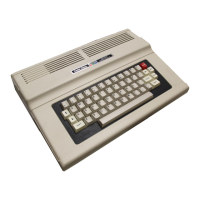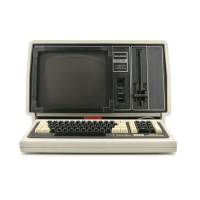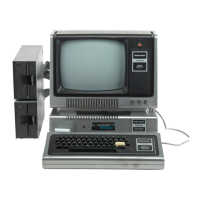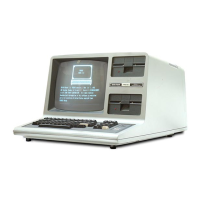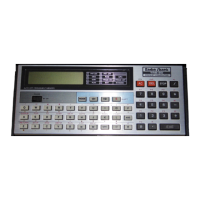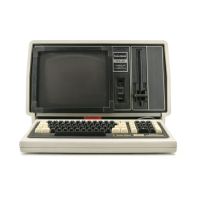Cassette Audio Input
If
the
Recorder
could
faithfully give
back
what
was
sent
to
it, we
could
eliminate a quad opera-
tional amplifier
and
a handful
of
passive
compo-
nents. But, it
doesn't;
so
Z4
stays in.
Matter
of
fact.
the
Recorder adds
stuff
to
the
signal.
Motor
noise
and
60
cycle hum
complicate
signal
processing considerably.
Upon a CLOAD instruction from
the
CPU.
the
Recorder
motor
turns
on
and
cassette
audio
is
applied
to
pin 4
of
J3.
This signal, called CAS-
SI
N,
is
tied
to
capacitor
C24 and resistor R67
at
the
input
of
the
audio processor
section.Z4,
pins
1, 6
and
the
output
pin 5, form an active filter.
This
part
of
the
circuit
is
used
to
filter
out
un-
desired noise
and
hum from CASSI
N.
It
is
a high
pass filter, with
about
a 2 kHz roll off.
If
you
looked
at
CASSIN using an oscilloscope,
you
would
see
the
data
pulses riding
atop
a
60
Hz
hum signal.
After
passing
through
the
high
pass filter,
the
resulting waveform would have
the
60
Hz
hum removed
and
only
the
data
pulses would be left.
The
signals are swinging
above
and
below a base line
of
about
2.0V. Fig-
ure
11
shows
some
idealized cassette signals.
The
signal
drawn
at
Line A
is
the
type
that
could
be
expected
at
the
output
of
the
active filter.
48
Once
filtered,
the
next
section
of
Z4
is
used as
an active rectifier.
CR4
and CR5,
together
with
the
biasing resistors
around
pins 2, 3 and 4 will
full-wave rectify
the
data
pulses. A typical
output
on
the
cathode
side
of
CR4
is
shown
on
Line B
of
Figure 11.
After
rectification,
the
signal
is
inverted and
amplified. Z4, pins
8,13
and
9,
is
wired
to
form
an inverting amplifier circuit.
The
ratio
of
R41
and
R42 gives
the
amplifier a gain
of
about
2.
Line C
in
Figure
11
shows a typical
output
at
Z4, pin 9.
The
last stage
of
Z4
is
used as a level
detector.
CR6
and CR7,
together
with C39. form a
power
supply
of
sorts.
The
amplified
audio
signal from
Z4,
pin 9,
is
applied
to
the
anode
of
CR6.
CR6
and CR7 decrease
the
voltage level
of
the
incom-
ing signal by
about
(i'l.8
to
1.0
volt.
C39
filters
the
resulting voltage and creates a
DC
signal like
the
one
shown
on
Line D
of
Figure 11. If
the
signal
output
from Z4, pin
9,
drops
below
the
reference voltage level
at
C39,
Z4,
pin
10
will go
low. It will
stay
low as long as
the
voltage
on
pin
12
of
Z4
stays below
the
reference. Line E
shows
the
resulting
output
from Z4, pin 10.
Notice
that
we lost a
couple
of
pulses
of
audio
because
the
signal did
not
swing
toward
ground
enough
to
trigger Z4, pin 10.
The
negative
transaction
at
pin
10
will be used
to
set flip-
flop Z24. Cassette
data
will be converted
into
program
data
by
the
software
in
ROM
and
the
CPU.
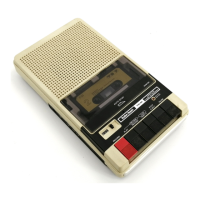
